I’d just as soon leave binoculars and camera at home than head afield without field guides.
I know some now prefer apps: they’re undoubtedly lighter and even allow you to hear bird songs. (And you can check out birder Tim Boucher’s favorite bird apps in our previous blog).
But I still prefer an old-fashioned paper field guide. I love paging through the (often beautiful) illustrations, using the books not only to identify species but to plan future adventures.
Roger Tory Peterson created the first modern field guide in 1934, Guide to the Birds. Before that, naturalists relied on complicated scientific keys. Peterson’s field guide changed natural history and made birding a hobby anyone could enjoy.
Today, field guides exist in an almost mind-boggling variety, covering just about any flora or fauna you’d like to identify.
These guides now take innovative approaches to natural history. Here are ten recent favorites. I’ve focused on North America for this blog, with guides appropriate for a range of skill levels and interests.
Let me know your own favorites in the comments section.
-
The Sibley Guide to Bird Life & Behavior
Illustrated by David Allen Sibley. (Knopf)
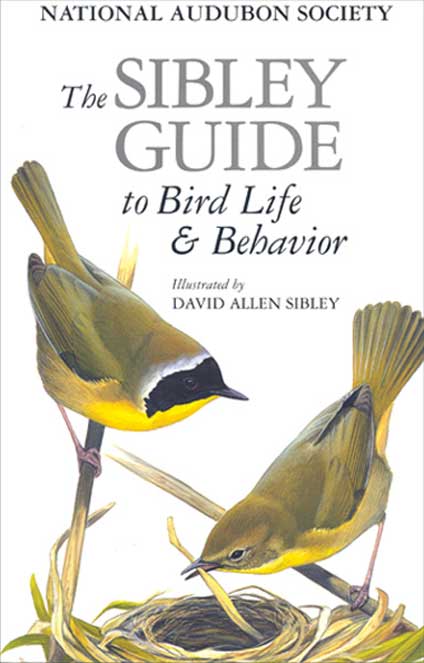
“Life listing” birds can have an unfortunate side: it can reduce birds to mere tokens to be “ticked” in a competitive game. Obsessive birders race around just to notch the most sightings; at its most extreme, it seems to have very little to do with birds.
This guide – a companion to the popular Sibley Guide to Birds – offers a remedy. It’s a guide to what birds do, encouraging observation of behavior and habits.
It includes information on taxonomy, food and foraging, breeding, migration and conservation. And it will help you find birds: a lot of the information is loaded with useful tips on where to look for bird species at different times of year.
-
Hummingbirds: A Life-Size Guide to Every Species
By Michael Fogden, Marianne Taylor & Sheri L. Williamson. (Harper Design)
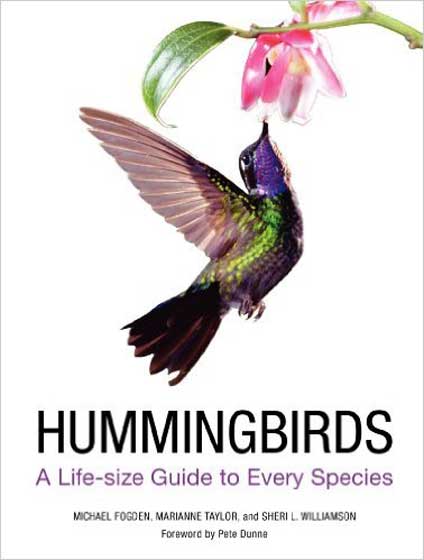
I’m not sure if this is a small coffee table book or a field guide. What earned this one a place on this list is its novel approach – the hummingbirds are pictured life sized.
These smallest of birds lend themselves to such an approach. It covers all the hummingbirds of the Americas, so it could serve as a guide when going to a hummingbird-rich hotspot like Southeast Arizona or Ecuador.
But it’s also a visual feast, creating a nice reference and a nice book to page through on a wintery evening.
-
The Warbler Guide
By Tom Stephenson & Scott Whittle. (Princeton University Press)
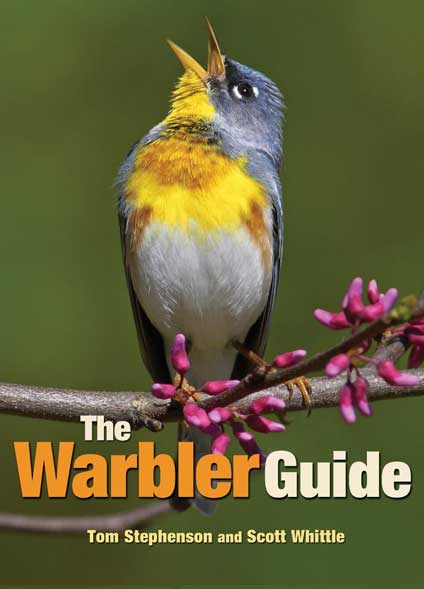
Even for experienced birders, warblers are difficult to identify. Standard field guides just don’t have enough space to provide all the plumage variations and differences among juveniles and adults.
This comprehensive book provides just about any view of the 56 North American warblers that you can imagine.
It represents a useful new approach to birding guides – comprehensive and specific guides that help birders identify particularly difficult groups of birds. There are now guides for shorebirds and raptors and even gulls. If you’ve reached that point in your birding career, these guides can be indispensable.
-
Squirrels of North America
By Tamara Eder. (Lone Pine Publishing)
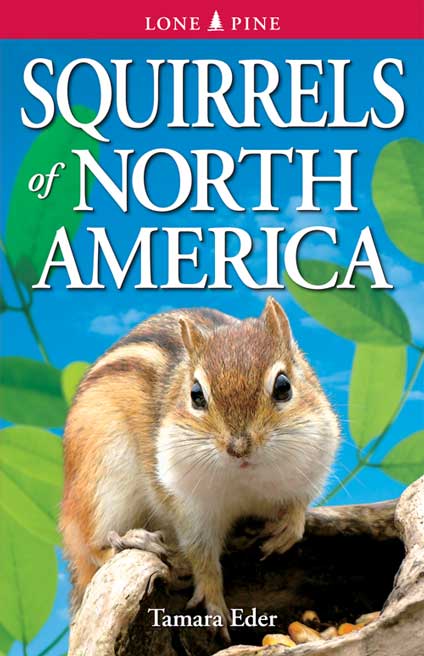
A field guide to squirrels? What could be so difficult about identifying these backyard rodents?
Actually the North American squirrel family – which includes tree squirrels, ground squirrels, flying squirrels, chipmunks, prairie dogs and marmots – represents 35 species. Many are found in some of the most scenic and iconic landscapes in the United States.
Many mammals are nocturnal or highly elusive, which can make keeping a “life list” very difficult (although even that doesn’t deter some enthusiasts). But squirrels are active and highly visible during the day.
To see all the squirrel species in this book would take you to many of North America’s great national parks and mountain ranges, from Utah’s canyonlands to the Olympic rainforest to Rocky Mountain peaks. And beyond.
-
Peterson Field Guide to Freshwater Fishes
By Lawrence M. Page and Brooks M. Burr. (Peterson Field Guides)
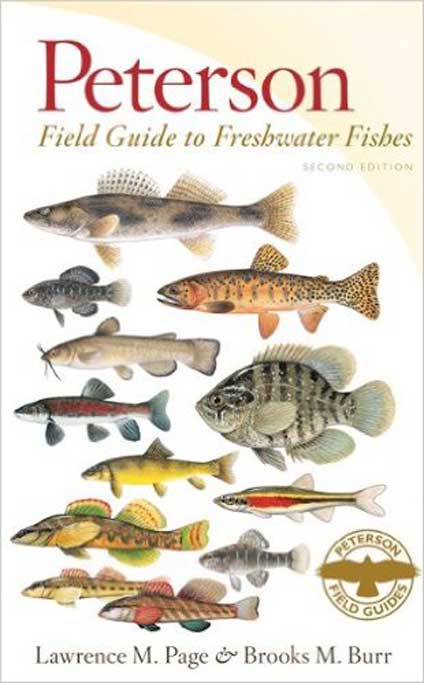
Increasingly, conservation-minded anglers recognize that a sport fishing mentality emphasizing just a few game fish – brown trout, rainbow trout, largemouth bass – has devastated native fisheries and aquatic habitats.
Many anglers now recognize that all native fish species have value, and keep life lists of species caught. There are “microfishers” who focus on minnows and other tiny fish, and “rough fishers” who seek out species of sucker and gar.
Other enthusiasts don’t even catch the fish – they observe them underwater via snorkeling.
Whatever the case, this book is the best source I’ve found to help you identify this amazing freshwater diversity. Expand your angling horizons and start seeking out the native fish in your area – all far more fascinating than stocked hatchery fish.
-
Dragonflies & Damselflies of the Rocky Mountains
By Robert DuBois. (Kollath & Stensas Publishing)
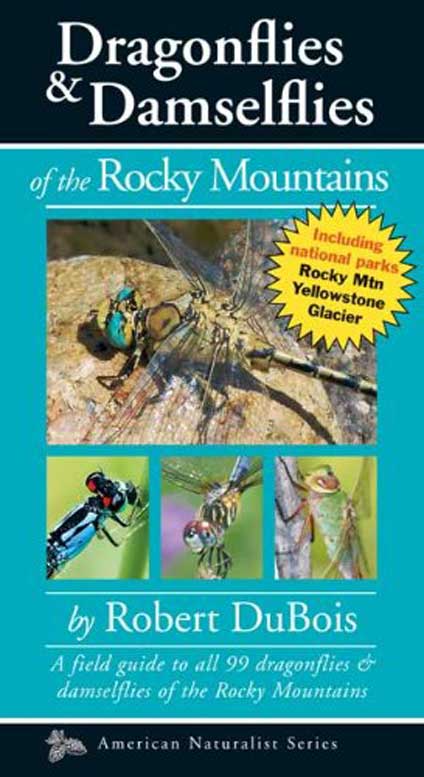
Dragonfly spotting has been called the new birding. Dragonflies are charismatic, they undergo similarly long migrations and they are often found in the same places as birds.
There are a number of excellent dragonfly spotting guides. I chose this one because it’s the one I use for my backyard and surrounding areas in Idaho.
It includes excellent photographs as well as key identification features. The Princeton Field Guides Dragonflies and Damselflies of the East is similarly excellent. There are also a number of state-specific guides. For birders, Dragonflies through Binoculars applies bird ID techniques to dragonflies.
So you have many options to help identify these charismatic insects. Pick one and head to your nearest marsh.
-
Field Guide to Grasshoppers, Katydids and Crickets of the United States
By John L. Capinera, Ralph D. Scott & Thomas J. Walker (Comstock Publishing Associates)
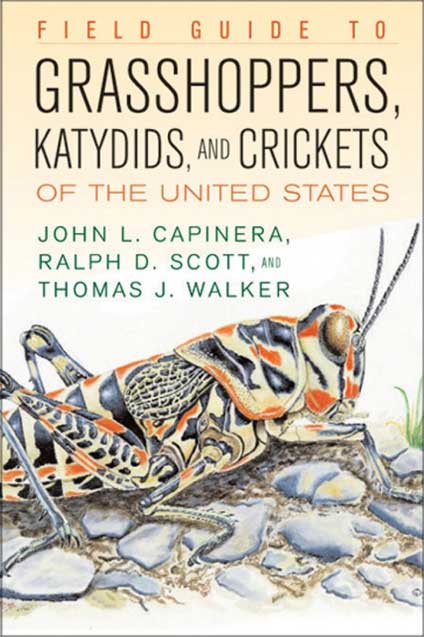
Crickets and katydids are the evening summer soundtrack for many of us. And there are even interesting citizen science projects around identifying the different katydid calls.
But really, let’s be honest: If you have this title on your shelf, you are either (a) a professional entomologist or (b) on the lunatic fringe of wildlife watching.
Still, if you must know what that grasshopper is hopping away, why not go all in and get this comprehensive guide?
You’ll amaze (or alarm) your friends, and besides, this is a well-done guide with full-color identification of 56 species, as well as information on ecology and behavior.
-
Falcon Nature Guides to National Parks
By Ann Simpson and Rob Simpson. (Falcon Guides)
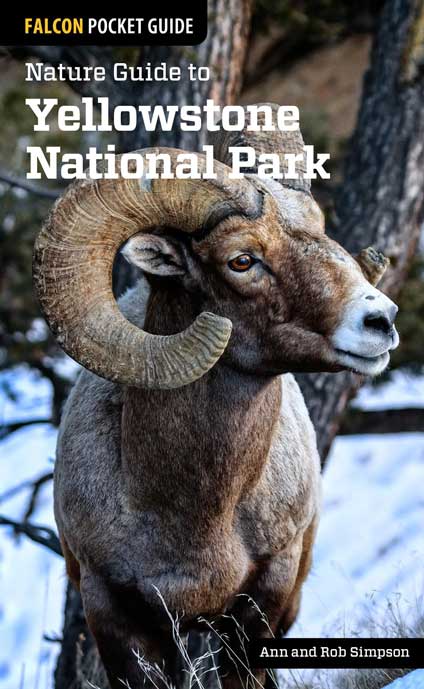
Say you’re heading on a family vacation to a national park. What field guides do you bring? Birds, wildflowers, mammals, reptiles? If you have varied interests, pretty soon you can have a whole library bogging down your daypack.
A new Falcon Guide series helps solve this problem with a field guide to all the common flora and fauna of specific national parks. Current titles are available for Shenandoah, Yosemite, Sequoia & Kings Canyon, Rocky Mountain and Yellowstone national parks, as well as the Blue Ridge Parkway.
These books probably won’t work for the serious life lister, focusing on rarely seen shorebirds or elusive nocturnal mammals. But they provide a great overview for a family vacation, enabling you to identify most of the creatures you’re likely to see.
-
Bison: A Falcon Pocket Guide
By Jack Ballard. (Falcon Guides)
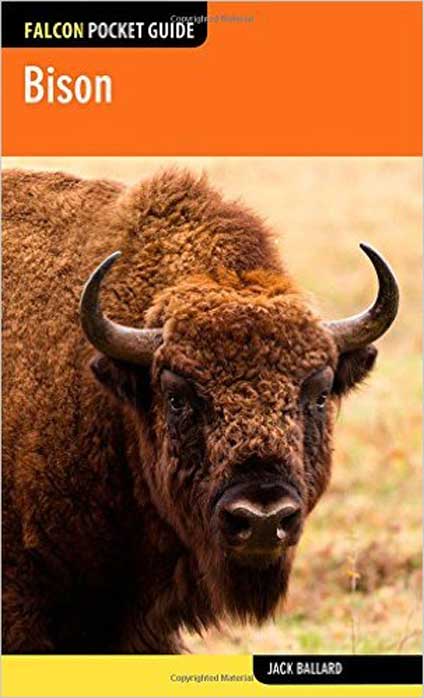
This is another interesting approach from Falcon Guides: a field guide to individual species. In addition to bison, the series includes guides to black bears, grizzlies, mountain lions, bighorn sheep and moose.
Many of these are species you’ll see on national park visits. What I like about this approach is that it encourages park visitors to stop and observe, rather than snap that bison photo and rush onto the next sighting.
The book includes detailed information on the behavior you’re likely to see while observing the herds at Yellowstone’s Lamar Valley or a Rocky Mountain meadow.
Few people have spent as much time photographing and observing these critters as Jack Ballard, so the slim volumes are packed with useful details.
-
Wildlife of North America: A Naturalist’s Life List
By Whit Bronaugh. (University Press of Florida)
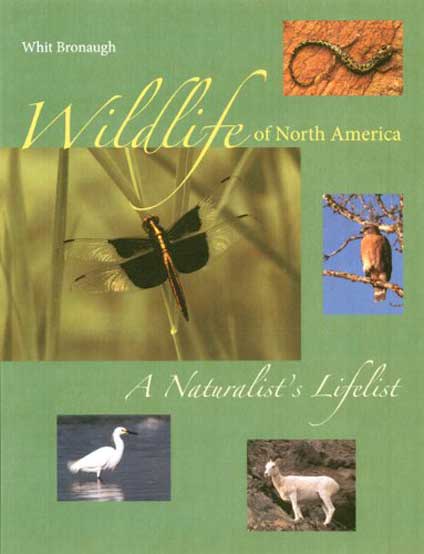
Finally, here’s a book to help you track all the interesting species you’ve seen using the guides above.
This massive tome is about as far from a handy field guide as you can get.
But it is a complete reference (and check list) of the species you’d commonly track on life lists: birds, mammals, reptiles, amphibians, freshwater fish, butterflies and dragonflies. It also includes space for notes on each sighting.
If you’re serious about listing, it offers a useful, old-school format to track your sightings.
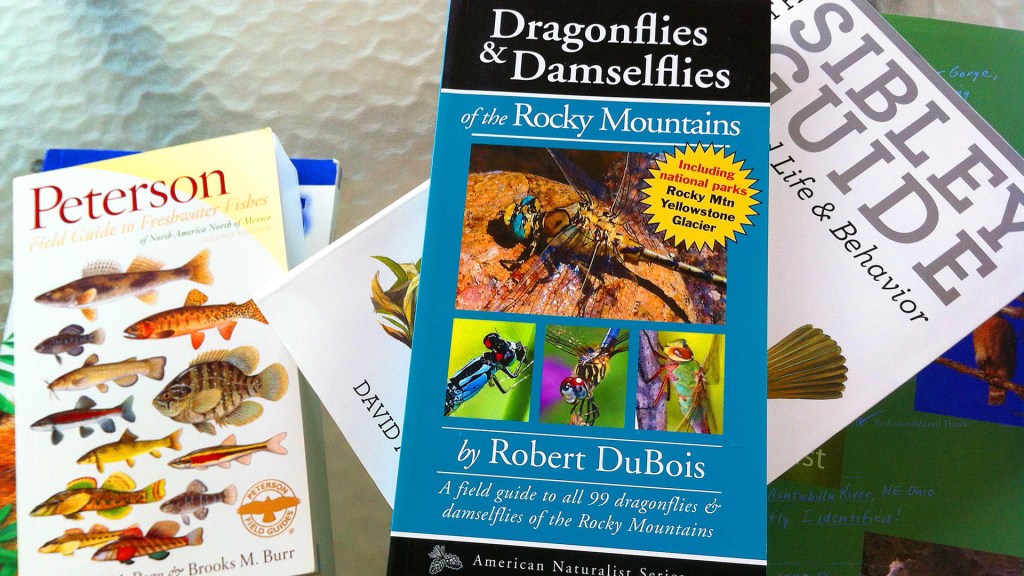



animal tracks and scat of California (covers all types of species … birds…insects…reptiles/amphibians…
Mammals of California
Mammal tracks & Sign
An interesting list that doesn’t fully match the title. Most “serious” naturalists wouldn’t bother with the Falcon or Lone Pine guides as they are usually far too general. Having said that “Squirrels of North America” is one of the exceptions for Lone Pine. BTW Don’t buy the “Squirrels of WESTERN North America” also published by Lone Pine as there is, wait for it, only one species difference between the two books. From memory I think it might be southern flying squirrel.
I’m not sure I’d put the FG to Grasshoppers (which I have) or even dragonflies (I have the binocular and my local region versions) on a list before adding butterflies or moths. Many of us with interest in less common groups of insects were drawn here through butterflies and before that with birds. I guess we can think of birds as that first gateway drug. 🙂 If you’re going to add grasshoppers then why not FG’s to ants, beetles or to bees? Where are plants?
I have and collect many field guides. I have almost all versions of all Peterson Field thus overall I would recommend most Peterson Field Guides, Although the Kaufmann guides are good to. BUT if I had to have or recommend only one field guide then it would be the Golden Field Guide to Birds by Robbins, Bruun and Zim. Besides my emotional attachment to the book I used as a kid, it gives a good overview of all common North American species with distribution maps with each bird’s description to know what is in your part of the world. It has some simple yet effective summary pages showing many birds of a particular group. It has sonograms next to many birds to see their calls. I’ve found that many people, while initially ignoring the latter, tend to find them useful as they listen to birds.
Although I use some apps in the field, like Ibird, I still love the field of having the physical book with me and carry a small rubbermaid tub in my car that has most of the field guides that I use on a regular basis. As the latter are going to be used, get dirty, maybe wet etc. I purchase used copies, often Ex-Lib, to bounce around in my car.
Thanks for your comment. My goal for this post was to show the diversity of field guides out there, from general overview to more specialized. And there simply wasn’t space to cover the full range of options. I did a follow-up post with more field guide and nature reference picks: https://blog.nature.org/2017/01/24/ten-more-field-guides-references-serious-naturalist-wildlife-nature-books/
Thanks for reading the blog.
Matt
Hello Matthew, I appreciate your blog and wonder if you would be interested in reviewing some of our nature guides. They are a laminated 12 panel folding format, and are intended to present information about the animal and plant life in an accessible format. We recently created a series of bird ID guides with the Cornell Lab of Ornithology – they can’t help but make birding more accessible and entertaining for novices.
9/28/17
I find the photography of the Audubon field guides especially helpful as either a primary or secondary (i.e., ‘adjunct’ or additional) field guide to those with sketches or drawings, e.g., Peterson, etc…. The regional, e.g., ‘Field Guide to Florida, ‘Field guide to New England’ particularly interesting because of the first chapters explaining the region’s geology as well as the last chapters describing State Parks, Preserves, etc. where the Flora and Fauna identified can be seen…!!!
Sincerely…
Brian Scott Fitzgerald
Alton, NH & New Port Richey, FL
Shame on you! All of life depends on the beings that turn sunlight into food. Natural history is not just about animals. Not one guide on plants, or fungi, or lichens, etc. If you look at the extinction crisis numbers, it is the plants that are giving way first. Everything else will follow. Humans have stirred plant life on the planet so violently without regard to the consequences, that our ecological relationships are breaking down. It would behoove us to at least know what is of use to our local ecology and what is not. That is the most basic lesson in natural history of all. No compatible plants, no insects. No insects, no birds. Etc. etc.
If you don’t mind extending the geographical coverage – and forgive my shameless self promotion – then Smithers’ Mammals of Southern Africa is aimed at serious mammal watchers; http://www.penguinrandomhouse.co.za/book/smithers-mammals-southern-africa-field-guide/9781770079137, and Wild Ways Southern Africa adds value to mammal sightings by describing and explaining behaviour; http://www.penguinrandomhouse.co.za/search/books?query=Wild+ways.
What field guides to insects of SE United States are available?
I would like to share a recent observation and get your feedback
I am seeing some changes in nature here in Arizona taking place that are very disturbing
I am in a position to see things that others might not notice…
Swimming pools are traps for insects… I have always scooped insects up from the surface of pools and tried to save their lives…Pools have always been traps full of insects… Recently there are no insects in these traps…They are literally gone.. The pools are literally crystal clear
When I was in the pool yesterday… One bird flew over during my entire ¾ hour swim. I am seeing fewer and fewer birds around.. I am concluding the humans are far more adaptable to climate change than small creatures (such as insects)…The smaller the creature the less adaptable it probably is..…. The smaller the creature the more important they are to mother nature’s food chain.. The gurus talk about how life in the oceans is impacted by changes of 1 or 2 degrees… The insect size creatures around us in Arizona are impacted by recent climate changes of 10 degrees or more…
I went out this morning and sat by the pool…. In one half hour I saw 3 birds… One was a bird of prey looking for the same thing I was looking for ..other birds… In this amount of time I could usually spot dozens of birds… It seems that the insect eaters are disappearing
We tend to think in terms of human adaptability to climate change.. We may have to change our perspective.. I hope there is another answer to what I have observed, but I have to think that the bottom of the food chain is not adapting to the drastic climate changes we are experiencing..
Dragonflies and Damselflies of Northeastern Ohio. A well organized, comprehensive guide. Applies to more than Ohio. Stunning photography. Published by the Cleveland Museum of Natural History.
Larry O. Rosche and Judy Semroc.
The Sibley Guide to Bird Life & Behavior is my favorite since being a birder in Kenya i am interested in learning more about bird behavior. i strongly believe that this field guide being from a practicing naturalist is rich with practical information on birds behavior. i would love to have it.
that guide on grasshoppers appears to be rich with information. In Kenya such guides are scarce. i would love to use this one too
The Laws Field Guide to the Sierra Nevada (Heyday Books) is wonderful because comprehensive on species, from trees to fungi to birds to plants — and because Laws is an artist, he teaches discernment so well, including how to key a plant.
The California Natural History Guides (UC Press) are the most amazing collection of field guides! Many are devoted to single taxa — excellent spiders, excellent bees, excellent shorebirds, for example — but then they also publish “introductions” to various features and processes of the landscape. A wonderful writer, David Carle, is responsible for UC Press guides to air, fire, water, and earth! Every state or ecoregion should have their own set of these guide books.